Buying Guide for the Best Energy Star Dehumidifiers
Choosing the right dehumidifier can significantly improve the air quality in your home, making it more comfortable and healthier. Energy Star dehumidifiers are particularly efficient, helping you save on energy bills while effectively removing excess moisture from the air. To find the best dehumidifier for your needs, consider the following key specifications and understand how they impact performance and suitability for your space.Capacity (Pints per Day)Capacity refers to the amount of moisture a dehumidifier can remove from the air in a 24-hour period, measured in pints. This is important because it determines how effective the dehumidifier will be in different room sizes and humidity levels. Small capacity units (20-30 pints) are suitable for small rooms or areas with mild humidity. Medium capacity units (30-50 pints) work well for medium-sized rooms or moderate humidity. Large capacity units (50+ pints) are ideal for large spaces or areas with high humidity. Choose a capacity based on the size of the room and the level of humidity you need to control.
Energy EfficiencyEnergy efficiency indicates how much energy the dehumidifier uses to remove moisture from the air. Energy Star certified models are designed to be more efficient, using less electricity and saving you money on energy bills. Look for the Energy Star label and compare the Energy Factor (EF) rating, which measures the amount of water removed per kilowatt-hour (kWh) of energy used. Higher EF ratings mean better efficiency. If you plan to use the dehumidifier frequently or in a large space, prioritizing energy efficiency can lead to significant savings over time.
Noise LevelNoise level is measured in decibels (dB) and indicates how loud the dehumidifier will be during operation. This is important if you plan to use the dehumidifier in a living space, bedroom, or office where noise could be disruptive. Dehumidifiers typically range from 40 dB (quiet) to 60 dB (louder). If you need a dehumidifier for a quiet environment, look for models with lower noise levels. For areas where noise is less of a concern, such as basements or garages, higher noise levels may be acceptable.
Tank Size and Drainage OptionsTank size refers to the capacity of the water collection container within the dehumidifier. A larger tank means less frequent emptying, which can be convenient for continuous operation. However, larger tanks also make the unit bulkier. Some dehumidifiers offer continuous drainage options, allowing you to connect a hose for automatic water removal. This is ideal for long-term use or in areas where emptying the tank regularly is impractical. Choose a tank size and drainage option based on how often you can empty the tank and where you plan to use the dehumidifier.
Humidistat and ControlsA humidistat allows you to set and maintain a desired humidity level in the room. This feature is important for maintaining consistent air quality and preventing over-dehumidification, which can lead to overly dry air. Look for dehumidifiers with easy-to-use controls and digital displays that show current humidity levels. Some models offer programmable timers and automatic shut-off features for added convenience. Choose a dehumidifier with controls that match your preferences for ease of use and desired level of automation.
Portability and SizePortability refers to how easy it is to move the dehumidifier from one location to another. This is important if you need to use the dehumidifier in different rooms or store it when not in use. Look for models with wheels, handles, and a compact design for easier mobility. Consider the size and weight of the unit, especially if you have limited space or need to move it frequently. Choose a dehumidifier that balances capacity and portability based on your specific needs and available space.

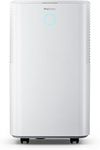
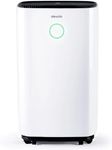
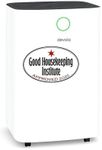


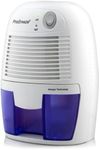


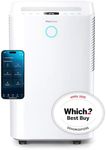

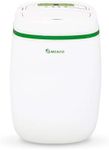


![NETTA Dehumidifier 500ml Mini Air Dehumidifier for Damp, Mould, Moisture, Portable and Ultra Quiet for Home, Bathroom, Bedroom, Kitchen, Wardrobe, Basement - Black [Energy Class A+++]](https://images-proxy.bestreviews.guide/QyA9LZ1yz5DJ7MdJQMes9OYkIDc=/0x150/https://m.media-amazon.com/images/I/41Swv7Ax-iL._AC_CX679_.jpg)


